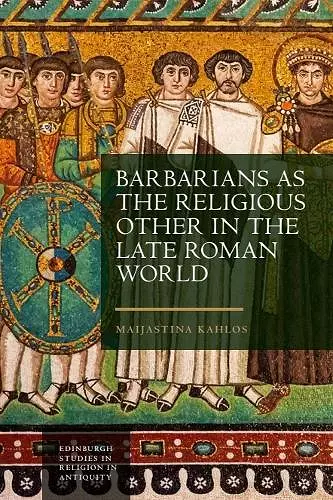Barbarians as the Religious Other in the Late Roman World
Format:Hardback
Publisher:Edinburgh University Press
Publishing:28th Feb '26
£95.00
This title is due to be published on 28th February, and will be despatched as soon as possible.

Two major transformations of Late Antiquity redefined what it meant to be Roman: the Christianisation of imperial power and the collapse of the Western Roman state. This book examines how Prudentius, Athanasius, Augustine and other Roman and post-Roman writers used the figure of the ‘barbarian’ to articulate these shifting religious, political, and cultural boundaries. Religious identity — especially the divide between Nicene orthodoxy and so-called ‘heretical’ forms such as Homoian Christianity — became a key marker of Romanness. Barbarians such as Goths and Vandals were not only portrayed as ethnic outsiders but also as ‘pagans’ or ‘heretics’, threatening both the Church and Roman civilisation itself. While heresy was often equated with barbarism, Roman elites also downplayed these differences when politically convenient, using religious language to both legitimise and delegitimise power. Through thematic and regional case studies, Kahlos shows how religion, ethnicity and imperial traditions were entangled in the construction of Roman identity – and how ‘barbarians’ were used to define, defend or reshape it.
This is an important book that pays a close attention to the intricate ways that religion, politics, cultural perceptions and military events were inextricably intertwined in this crucial transition period. It will serve both as a wonderful introduction to students while experts are bound to learn from it. -- Eric Fournier, West Chester University
ISBN: 9781399514446
Dimensions: unknown
Weight: unknown
288 pages